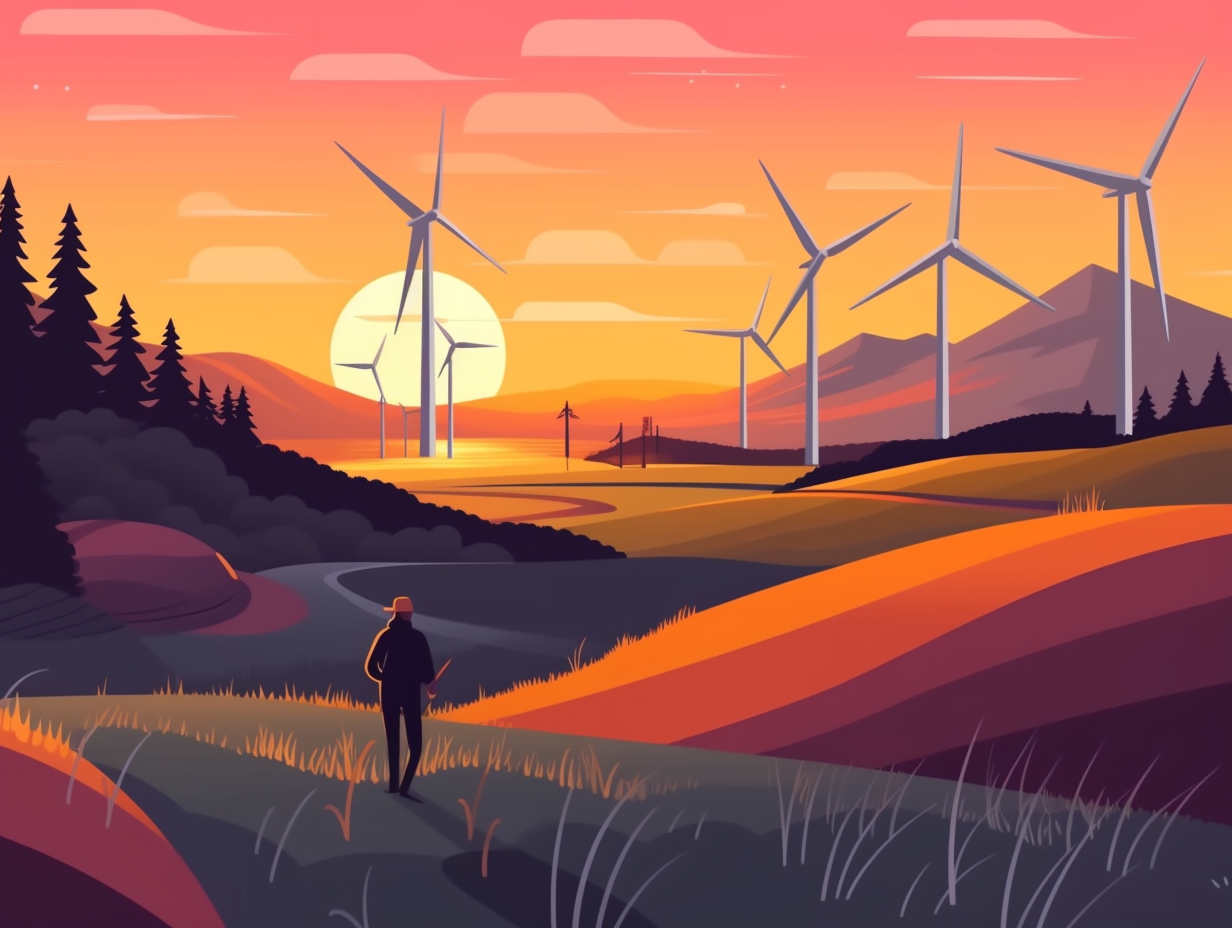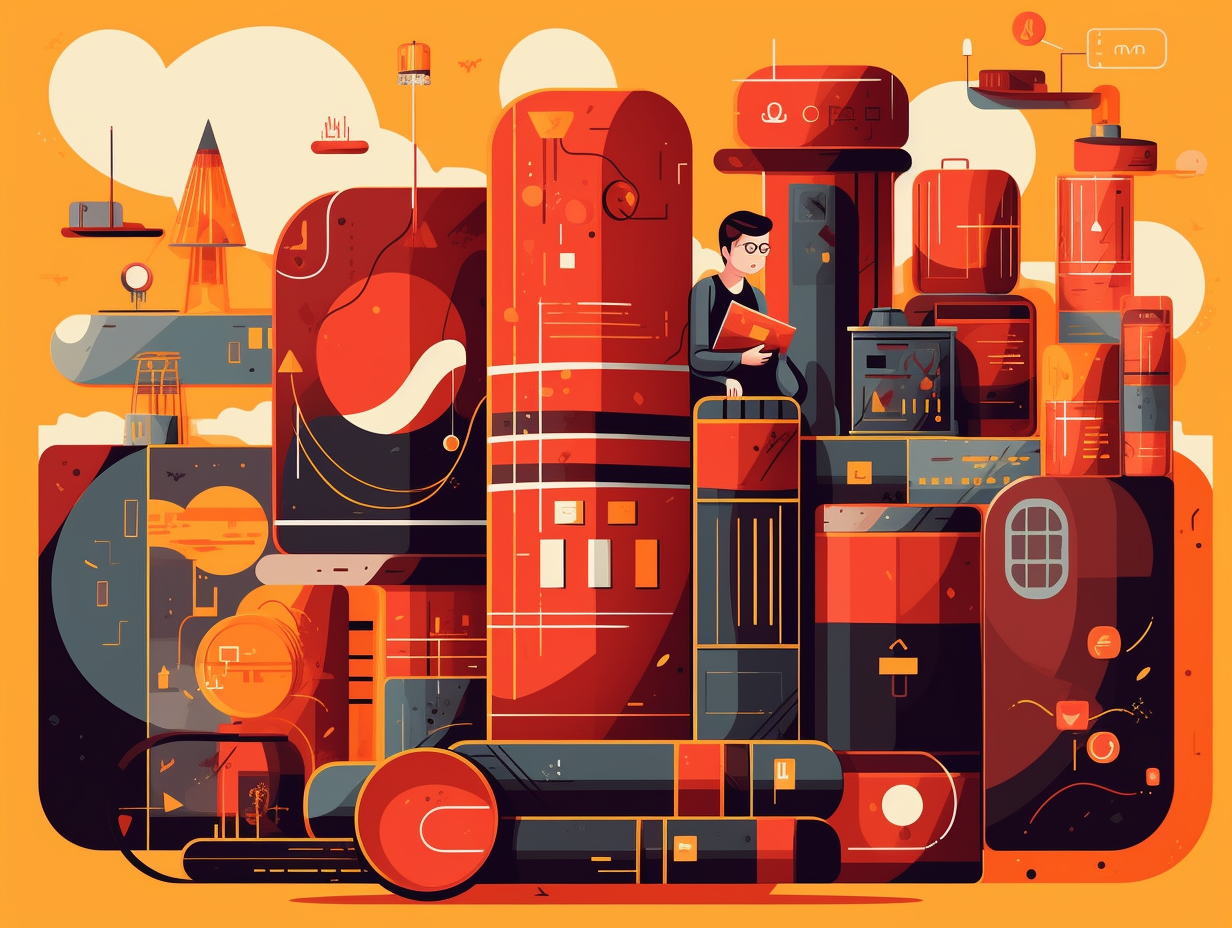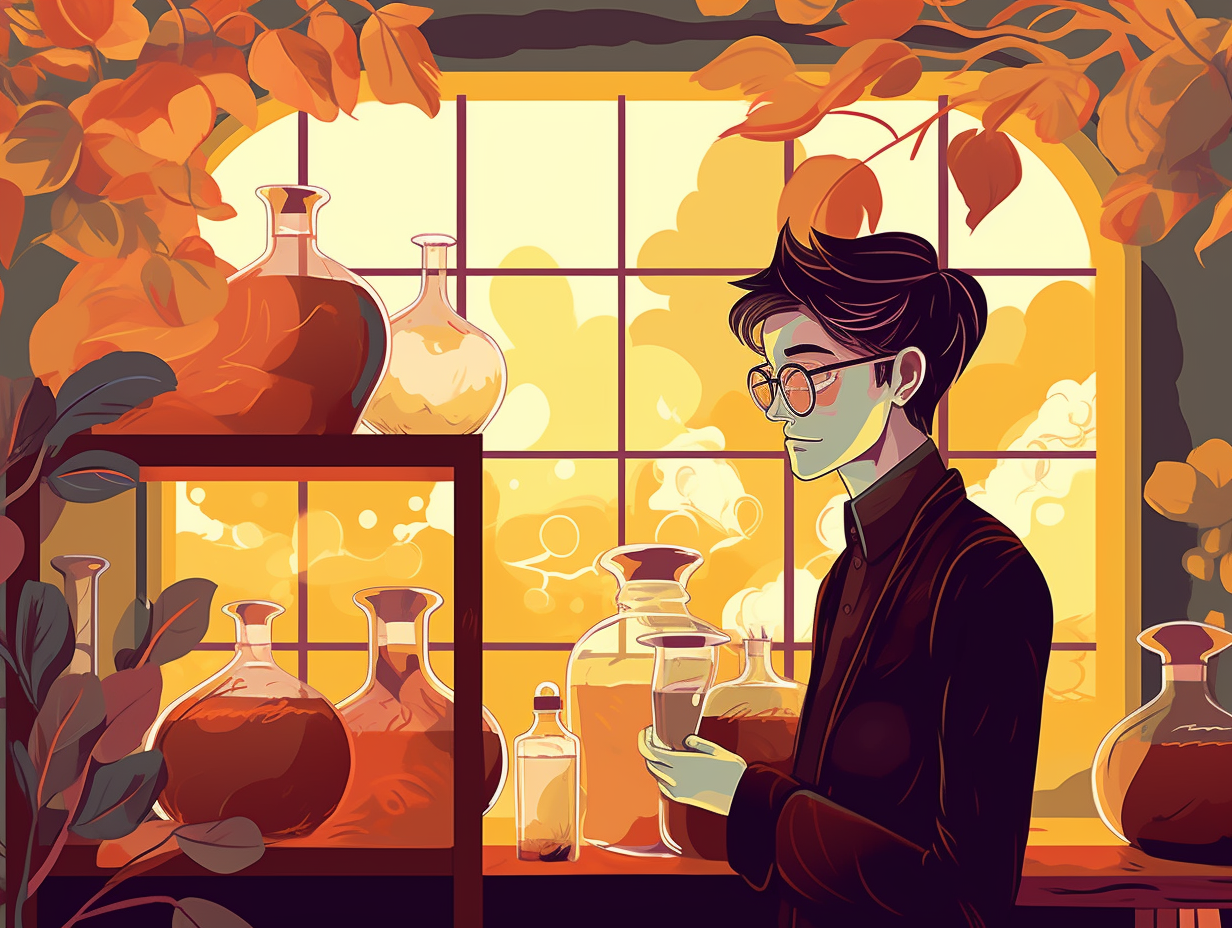25 Electrifying Fun Facts About Nuclear Energy That Will Blow Your Mind!

1. Nuclear Laughter Medicine
Whoever said laughter is the best medicine clearly wasn't aware of nuclear energy's healing powers for Mother Earth: With its low-carbon footprint rivaling wind and one-third the CO2 emissions of solar, nuclear energy packs a punch in battling climate change and decarbonization.
Source => world-nuclear.org
2. Uranium Man
When Iron Man needs a recharge, he should consider uranium or plutonium as a possible energy source: Nuclear fission can power entire cities for decades without releasing harmful greenhouse gases or pollutants, making it one of the cleanest forms of energy production out there!
Source => energy.gov

Did you know that a single wind turbine can power hundreds of homes annually with just one megawatt of electricity? Discover how this renewable energy source is taking the industry by storm and creating new job opportunities! 🌬️💡
=> Fun Facts about Renewable-Energy
3. Cold War Cooperation
Ladies and gentlemen, no need for a Cold War on this one: Nuclear fusion research is solely focused on clean, sustainable energy, and has been a peacefully cooperative venture between nations since the 1950s, even involving the US and the Soviet Union working together in pursuit of alternatives to the oil crisis!
Source => lppfusion.com
4. Nuclear Lemonade
You hear of making lemonade out of lemons, but what about making freshwater out of seawater with a little help from nuclear energy? Now that's an unexpected twist: Nuclear desalination uses electricity and heat from nuclear power plants to remove salt from seawater, providing a sustainable and economically competitive source of potable water and electricity. Not only does it have low environmental and social impacts, but it also gives new meaning to "powering" through your thirst!
Source => sciencedirect.com

5. Space Astronaut BBQ
Why did the astronaut bring a pack of irradiated meat to the space party? To satisfy their unrelenting cosmic appetite for food safety, of course: NASA astronauts consume irradiated meat to prevent foodborne illnesses during space missions, thanks to FDA-approved technology that uses gamma rays, X-rays, or electron beams to sterilize food, making it particularly safe for those with weakened immune systems, such as chemotherapy patients or individuals with AIDS.
Source => fda.gov
6. Thorium Timekeeper
Remember the White Rabbit from Alice in Wonderland, always running late with an oversized pocket watch? He might soon be out of excuses thanks to some nuclear magic: Scientists are developing an ultra-accurate nuclear clock using thorium's nuclear structure, which could be accurate to one second in 33 billion years and have a relative systematic frequency uncertainty below 1 × 10–18.
Source => cerncourier.com
7. Radioactive Super Crops
Call it a "radiant" revolution in agriculture: nuclear energy has been spicing up our lives (and crops) by inducing spontaneous genetic variations in plants, creating super crops with higher yields, faster growth, and increased resilience to weather and disease - all without passing on radioactivity to future generations!
Source => iaea.org
8. The Cherenkov Glow Show
If Taylor Swift found nuclear reactors enchanting, she might croon "Everything has changed" when she spots the Cherenkov radiation: This eerie blue glow in the water surrounding nuclear reactors is caused by charged particles such as electrons and protons moving faster than light in that particular medium, resulting in an atom's energy balance getting perturbed and releasing photons, which creates a mesmerizing blue light that's visible to the human eye.
Source => iaea.org
9. Nuclear Hot Potato Storage Solutions
You might think that finding the perfect place to stash nuclear waste is a game similar to hot potato, but with much higher stakes and glow-in-the-dark consequences: In reality, experts have developed multiple disposal methods for nuclear waste, with the majority of this hazardous material being safely stored in deep geological deposits, ensuring public safety and environmental protection.
Source => world-nuclear.org

10. Frankenstein's Clean Energy
If Frankenstein had the atomic bomb: nuclear energy might have sparked a very different tale! On a more factual note: nuclear energy is the world's second largest source of low-carbon power, responsible for 26% of low-carbon generation in 2020, with over 440 commercial reactors spread across 32 countries, nuclear research in more than 50 countries, and even a role in powering space exploration and controlling diseases.
Source => world-nuclear.org
11. The 8000x Efficiency Hare
If fossil fuels are the plodding tortoises of the energy world, nuclear power is the speedy hare that just downed an energy drink: nuclear energy is nearly 8,000 times more efficient than traditional fossil fuels, requiring less fuel to power the plant and producing significantly less waste in the process.
Source => springpowerandgas.us
12. Radioactive Dating: Earth's Best Matchmaker
Who would've thunk it? Radioactive dating isn't just for revealing your great-great-great... grandma's birth year or bringing the 1980s back to life; it's also saving our planet: In the United States alone, nuclear energy is responsible for generating almost 800 billion kilowatt hours of electricity every year, which makes up more than half of the nation's emission-free electricity, effectively avoiding over 470 million metric tons of carbon emissions. Not only that, but nuclear energy also supports nearly 500,000 American jobs and adds around $60 billion to the U.S. GDP annually while contributing to national security and energy diplomacy. Now that's a "power" couple you can't ignore!
Source => energy.gov
13. Exit Sign Lifesavers
Forget finding the exit in a sticky situation, nuclear energy has it covered for over a decade: Tritium exit signs, powered by the radioactive hydrogen isotope tritium, have a life span of approximately 10-12 years before needing proper disposal, due to the isotope's half-life of around 12 years.
Source => epa.gov
14. Undead Space Power
Borrowing power from the undead: Radioisotope power systems, which harness the heat from decaying plutonium-238, have been safely powering deep space missions for over 50 years, visiting every planet except Mercury, and even delivering space heaters to help spacecraft components survive the cold, dark, final frontier.
Source => energy.gov

15. Nuclear's Greenhouse Smasher
Here's a little nuclear wisdom to brighten up your day and blow your mind: nuclear energy actually produces hardly any greenhouse gas emissions during operation, emitting roughly the same carbon dioxide-equivalent emissions per unit of electricity as wind, and a mere third of the emissions compared to solar energy. That's right, folks - this powerhouse isn't just splitting atoms, it's also smashing our carbon woes!
Source => world-nuclear.org
16. Hybrid Energy Superhero
What do you get when you cross nuclear energy with renewable wind and solar power? A hybrid energy superhero, set to save the world from greenhouse gas villains!: The International Atomic Energy Agency (IAEA) held a meeting in 2018 where experts from 15 countries discussed the potential of these mighty Nuclear-Renewable Hybrid Energy Systems, which could provide low-carbon, affordable, and resilient power generation, while kicking greenhouse gas emissions to the curb.
Source => iaea.org
17. Mighty 1-Gigawatt Power Punch
Ready to have a "blast" with an energetic fact? Hold on to your atoms, here comes the power punch: Nuclear power plants provide over 50% of the United States' clean energy electricity, making them the superheroes of clean electricity. To top it off, every nuclear plant dukes it out with an impressive 1-gigawatt power punch, efficiently and reliably powering millions of homes across the great American landscape!
Source => energy.gov
18. Glow-in-the-Dark Experiments
You know what's glowing brighter than a radioactive scientist's selfie at a nuclear research facility? Their exciting experiments, of course: U.S. Nuclear Regulatory Commission oversees 31 active research and test reactors, primarily based in universities, which provide radiation for experiments in fields like physics, biology, medicine, and environmental sciences, but not producing an iota of electricity in the process.
Source => nrc.gov
19. Doctor's Radioactive Toolkits
It turns out that nuclear energy isn't just about making things go "boom" or keeping the lights on – it's been sneaking its way into doctors' bags, too: Radioactive isotopes star in the show called nuclear medicine, where they diagnose and treat diseases by using radiolabeled nanoparticles for precision-aimed deliveries of drugs or imaging agents to specific cells or tissues.
Source => ncbi.nlm.nih.gov
20. Earth's Fusion Fiesta
As the Sun throws the ultimate nuclear fusion party: Scientists are working on replicating the same energy production method here on Earth. Specifically, they're focusing on the deuterium-tritium fusion reaction – which could result in a clean and abundant source of energy. Meanwhile, the DOE's National Ignition Facility is using 192 laser beams to tango with a tiny DT target in their quest to create sustained fusion reactions.
Source => energy.gov
21. Greenhouse Party Crasher
If greenhouse gases were throwing a party and uranium was the uninvited guest who secretly saved the soirée from a heart-stopping carbon footprint, here's how much of a hero they'd be: Nuclear energy has prevented over 60 gigatonnes of carbon dioxide emissions in the past 50 years, equivalent to nearly two years' worth of global energy-related emissions.
Source => iaea.org
22. Nuclear Plants' Second Wind
It’s a bird, it’s a plane, no—it’s nuclear power plants getting a second wind: By extending the life of existing nuclear plants for just 10 years, the world gains an additional 26,000 TWh of low carbon electricity, more than half of what nuclear has generated in the last 40 years at a levelized cost of US$30-40 per MWh, making it as cost-effective as some spiffy new wind and solar farms.
Source => iaea.org
23. Dracula's Coal-fired Radioactive Nemesis
Move over, Dracula, we've got a new radioactive villain in town: coal-fired power plants! Shockingly, these seemingly mundane energy sources emit at least ten times more radiation than nuclear power plants and their ash contains a sinister cocktail of toxic elements such as arsenic, lead, thallium, mercury, uranium, and thorium. Some companies are so ingenious that they even salvage uranium from coal plant smoke to resell it to the nuclear power industry – talk about recycling and reanimation combined for the greater evil! Stay woke, fellow electricity enthusiasts: it's time we encourage a serious rethink about energy production and its environmental impact.
Source => europarl.europa.eu
24. Flatpack Nuclear Reactors
Move over flatpack furniture, it’s time for flatpack nuclear reactors: Small modular reactors (SMRs) are advanced nuclear reactors with a power capacity of up to 300 MW(e) per unit, which can be factory-assembled and transported like the world's most ambitious DIY project, providing low-carbon power for remote areas and emergency situations, while boasting increased safety margins that reduce the risk of unsafe radioactivity releases.
Source => iaea.org
25. Atomic Hydrators
Forget hydrogen-powered cars; let's talk about atomic hydrators: Nuclear desalination could revolutionize the global water crisis by providing vast quantities of drinkable water in arid and semiarid regions, as nuclear reactors are the only source capable of delivering the massive energy needed, even being more cost-competitive and leaving a smaller carbon footprint than fossil fuels.
Source => world-nuclear.org
Related Fun Facts




















